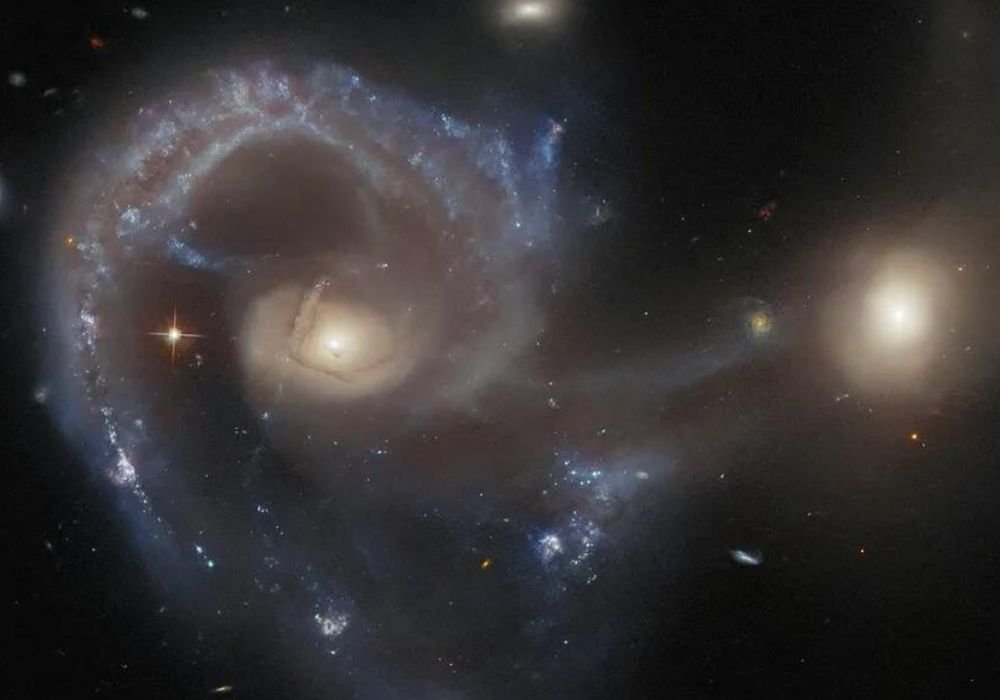James Webb Space Telescope (JWST) and Hubble Space Telescope The main sources of cosmic images of stars, galaxies or other cosmic objects millions of light years away. The European Space Agency (ESA) and the United States National Aeronautics and Space Administration (NASA) release new space photos every month; September was no different.
For example, in late August, NASA and ESA released a new Hubble image showing a galaxy far away from planet Earth, called ESO 300-16, about 28.7 million light-years away. The image is part of a series of surveys aimed at searching for galaxies neighboring the Milky Way, and space agencies have since released photographs of other galactic systems.
The most incredible images from NASA in September
Throughout September, astronomy enthusiasts had the opportunity to contemplate beautiful, high-quality space images produced from data collected by the Hubble and James Webb telescopes. TecMundo made a choice One of the five most incredible photos It was published to share with you throughout the month. check out!
Supernova SN1987A
At the beginning of the month, the North American space agency released details of a near-Earth supernova photographed by JWST, which is considered one of the closest supernovae to planet Earth. Located 168 thousand light years away in the Large Magellanic Cloud, The image of SN1987A makes it possible to observe the gas and cosmic dust created during the supernova explosion.
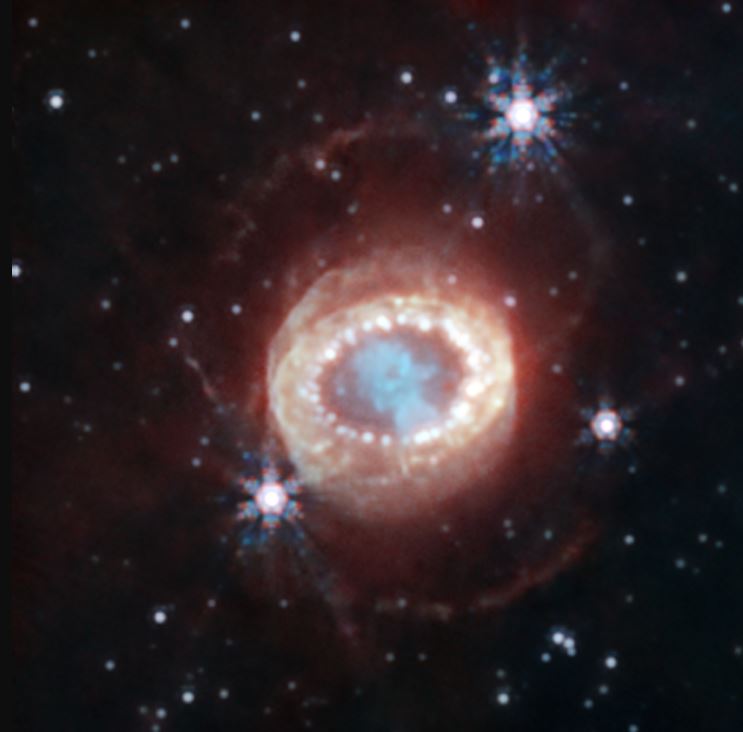
“Although these structures have been observed to varying degrees by NASA’s Hubble and Spitzer Space Telescopes and the Chandra X-ray Observatory, Webb’s unique sensitivity and spatial resolution revealed a new feature in this supernova remnant,” NASA explains in a statement. “
Herbig-Haro 211
Another image, photographed by the James Webb telescope, shows an interstellar jet at supersonic speeds located in the constellation Perseus, about a thousand light-years from Earth.. The area is known as Herbig-Haro 211.

The space agency explains that this is one of the youngest and closest protostar streams. The image shows the ejection of a Class 0 protostar, a cosmic object similar to our Sun; but it is still in its ‘infancy’ stage; It has only 8% of the mass of the Sun, but will eventually evolve into a similar star.
“Herbig-Haro (HH) objects are bright regions surrounding newborn stars, formed when stellar winds or gas jets ejected from these newborn stars create shock waves that collide with nearby gas and dust at high speeds,” the statement states.
Europa, Moon of Jupiter
For some time, astronomers have suggested that Europa, one of Jupiter’s moons, might be one of the regions in the Solar System that could facilitate the development of life as we know it. After photographing the Moon and collecting data on its atmosphere, Scientists have determined that carbon dioxide in one of Europa’s regions probably originates from under the ocean.
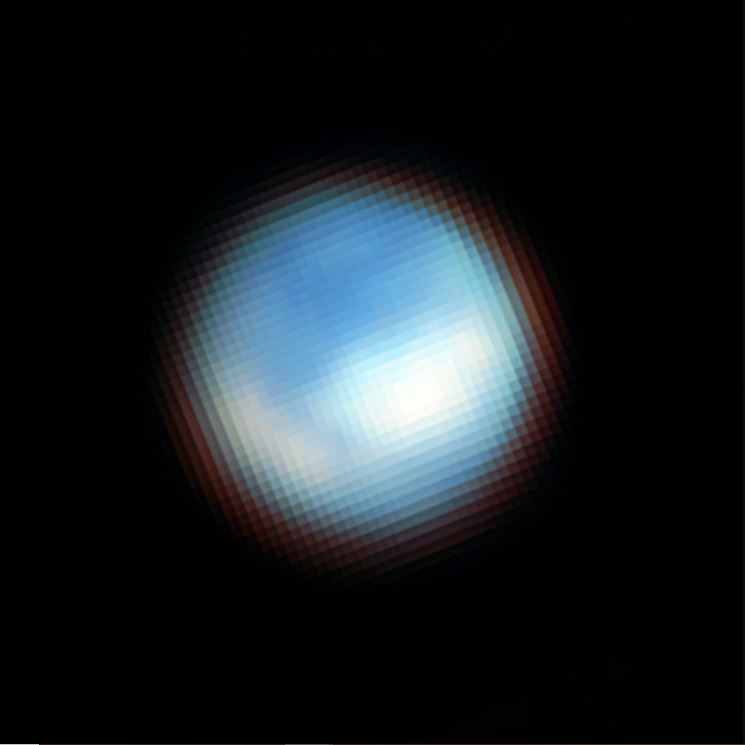
“Life on Earth loves chemical diversity; The more variety the better. We live a carbon-based life. “Understanding the chemistry of Europa’s ocean will help us determine whether it is hostile to life as we know it or whether it is a good place for life,” said Geronimo Villanueva, a NASA partner and one of the authors of two studies describing the discovery. .
Galaxy NGC 3156
During the month, the Hubble Space Telescope also surveyed the galaxy NGC 3156, located in the equatorial constellation of Sextans, about 73 million light-years from Earth. Astronomers explain this It is a lenticular galaxy with a higher average number of stars swallowed by the supermassive black hole in the region. – It was given this name because of its eye-lensed appearance.
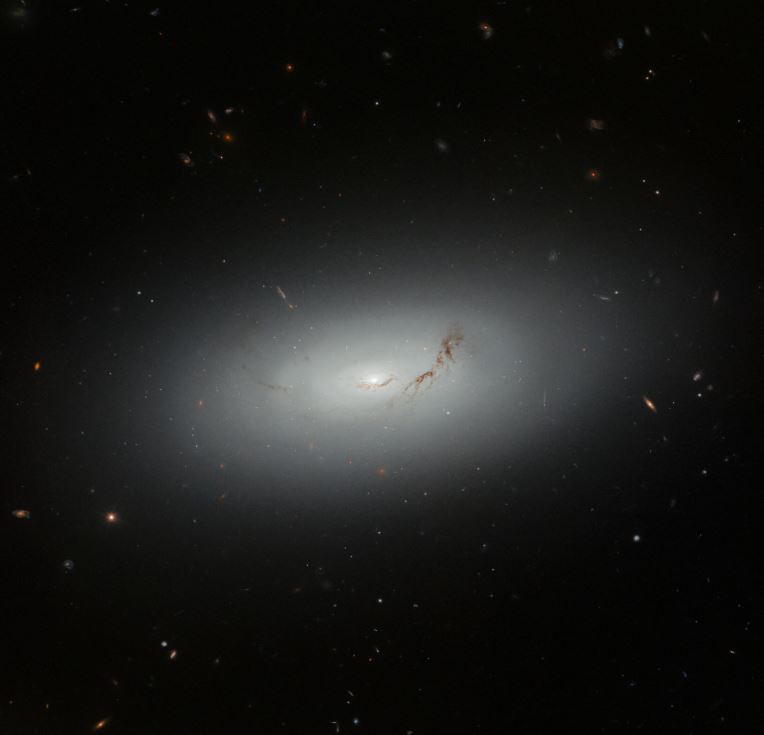
“Just as [galáxias] Spiral, lenticular stars have a stellar bulge at the center and a large disk around them. They often have dark dust lanes similar to spirals but do not have large-scale spiral arms. Like elliptical galaxies, lenticular galaxies have mostly older stars and little ongoing star formation,” NASA said in a statement.
Arp 107 galaxy pair
Hubble also recorded a beautiful image of Arp 107, a celestial body with two galaxies: energetic Seyfert galaxy on the left and a smaller galaxy connected via a dust ‘bridge’ on the right. Both are in the midst of a galactic collision and are located approximately 465 million light-years from Earth.
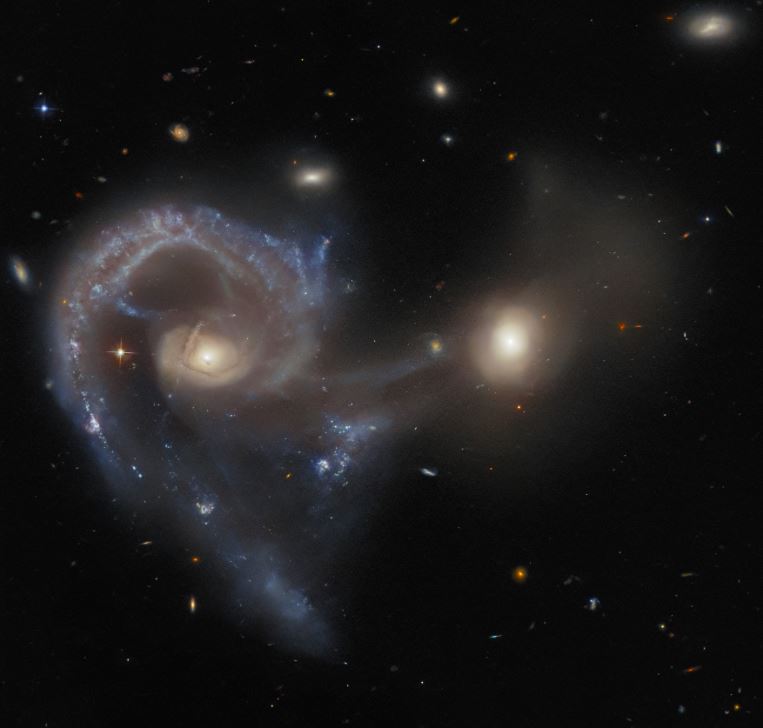
“Arp 107 is part of the Atlas of Peculiar Galaxies, a catalog of 338 galaxies compiled by Halton Arp in 1966. Hubble captured the galactic pair as part of a program observing members of the Arp catalogue. “One of the goals of the observing program was to provide images of these magnificent and elusive galaxies,” explains NASA editor Andrea Gianopoulos.
Did you like the content? Stay up to date with more astronomy curiosities at TecMundo and take the opportunity to browse colorful images from the James Webb telescope.
Source: Tec Mundo
I’m Blaine Morgan, an experienced journalist and writer with over 8 years of experience in the tech industry. My expertise lies in writing about technology news and trends, covering everything from cutting-edge gadgets to emerging software developments. I’ve written for several leading publications including Gadget Onus where I am an author.






